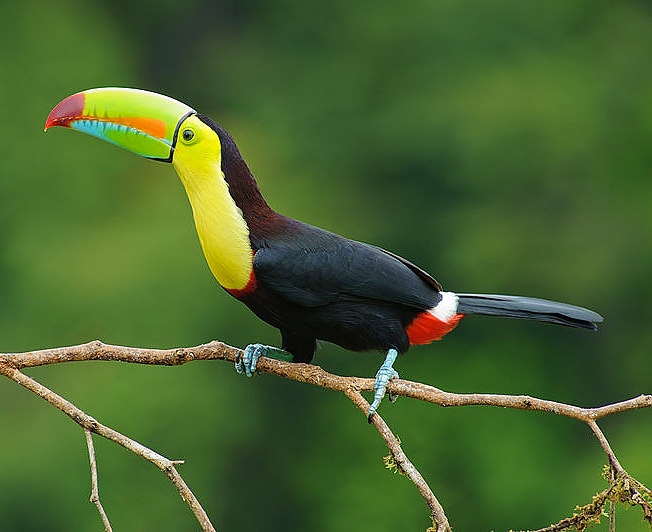 |
| (Photo from Online Utility) |
They mainly feed on the fruits and seeds of various tropical trees, namely Cercropia, Inga, Protium, Ficus, Rheedia, Alchornea costaricensis, Didymopanax morototoni, Astrocaryum polystachyum, Iriartea exorrhiza, Virola panamensis, Cupania seemanni, Cnestidium rufescens, Salacia, Swartzia cubensis and Ehretia tinifolia. They also take snakes, small lizards, insects such as beetles, cicadas and ants, and the eggs and nestlings of passerine birds.
Breeding:
Keel-billed toucans breed in March-June. The nest is a natural tree cavity or an old woodpecker nest, lined with wood chips and green leaves. The nest is about 7 m above the ground. The female lays 1-4 dull white eggs with irregular pitted grooves extending lengthwise along the egg. The eggs are incubated by both parents for 16-20 days. The chicks are fed by both parents and fledge 45-60 days after hatching. They reach sexual maturity at 2-3 years of age.
Conservation:
IUCN status – LC (Least Concern)
This species has a large breeding range and the global population is estimated at 50.000-500.000 individuals. The population is suspected to be in decline locally owing to taking of young as pets and unsustainable levels of hunting, but the keel-billed toucan is not considered threatened at present.







